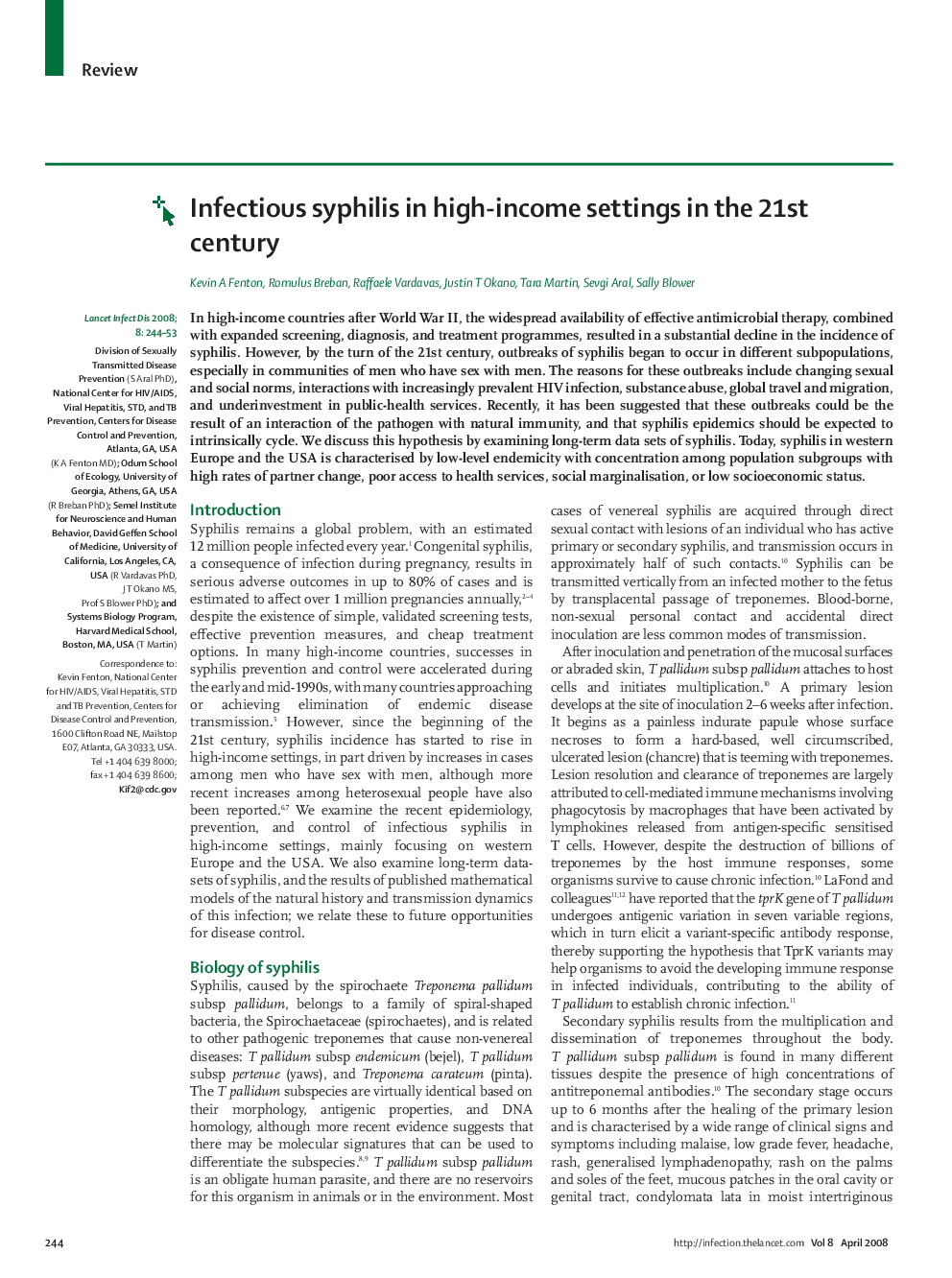| Article ID | Journal | Published Year | Pages | File Type |
|---|---|---|---|---|
| 3411932 | The Lancet Infectious Diseases | 2008 | 10 Pages |
SummaryIn high-income countries after World War II, the widespread availability of effective antimicrobial therapy, combined with expanded screening, diagnosis, and treatment programmes, resulted in a substantial decline in the incidence of syphilis. However, by the turn of the 21st century, outbreaks of syphilis began to occur in different subpopulations, especially in communities of men who have sex with men. The reasons for these outbreaks include changing sexual and social norms, interactions with increasingly prevalent HIV infection, substance abuse, global travel and migration, and underinvestment in public-health services. Recently, it has been suggested that these outbreaks could be the result of an interaction of the pathogen with natural immunity, and that syphilis epidemics should be expected to intrinsically cycle. We discuss this hypothesis by examining long-term data sets of syphilis. Today, syphilis in western Europe and the USA is characterised by low-level endemicity with concentration among population subgroups with high rates of partner change, poor access to health services, social marginalisation, or low socioeconomic status.
